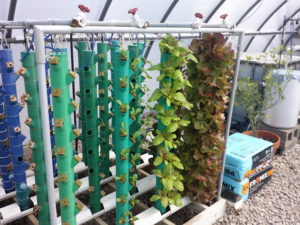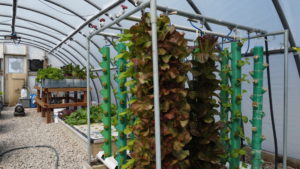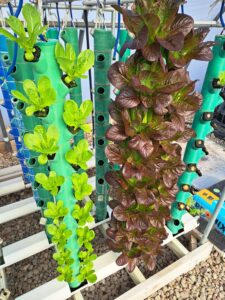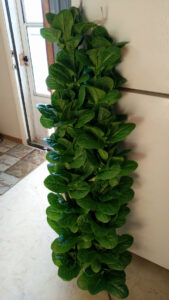3D G-Tower, The Original!
Ever since the beginning of all of the ZipGrow tower hype hitting the YouTube aquaponics scene, something didn’t smell quite right, especially all of that "patented design" hub-bub. As it turned out, it wasn’t the design that was patented, it was the method of use of the materials and the use of the assembled product. They’re merely a vinyl fence post sleeve with a half-inch slot sawed down one side and stuffed with Poly-Flo brand pond filter media. It’s unfortunate that it isn’t actually a patented design because it should never be duplicated. Too many critical flaws that were spun as "features". (Not sure how media that constantly clogs up is a feature that anybody would want.)


3D G-Tower was the first 3D printed garden tower ever created and pre-dates all of the feeble attempts on Thingiverse that are merely attempts at copying its outside appearance. It isn’t what’s on the outside that makes them work! It’s easy to tell that the attempted copies on Thingiverse have never been tested in a production environment, or people would realize that you can’t grow plants on the back side of the tower where the sun doesn’t shine. Try growing a tomato plant on the north side of your house in the USA, in the shade, and you’ll soon understand the problem.
3D G-Tower allows you to grow more market-size plants per foot than the ZipGrow tower because plants are horizontally offset, which reduces the amount of vertical spacing required. The ZipGrow tower grows all plants in a straight line, which restricts things like market-size lettuce to one plant per foot. 3D G-Tower grows two plants per foot thanks to the horizontal offset. A 4-foot 3D G-Tower is twice as productive as a 5-foot ZipGrow tower.
3D G-Tower accepts rockwool plugs, netpots, Grow Grips, and pretty much any other kind of plant starter plug. No media is used in the towers because it’s not required to hold your plants in the tower. There is nothing inside the tower to plug up, simply pull out your plants roots and all. Rinse down the tower and replant it in just a few minutes, no need for a special tool and workbench to wrestle media strips in and out as with ZipGrow tower.


Anybody can make a 3D G-Tower with any 3D printer capable of printing with PETG filament. If you’re the geeky type and not afraid to get your hands dirty, just get a plain old Creality Ender 3 printer. If you want something faster and more reliable, spend a little more and get a Creality K1 or K1 Max. Once you have the printer, you can create towers for the cost of electricity, labor, and filament rolls ($18 to $25 each).
Please keep in mind that this website does not sell pre-made 3D G-Towers other than single trial towers. You may purchase a training package for making your own using the official 3D G-Tower models and you are welcome to sell pre-made towers if you wish. Panhandle Ponics R&D does not operate a 3D printing farm or any other form of mass manufacturing operation. Feel free to start your own 3D G-Tower mail order business!
The 3D G-Tower training package covers assembly, installation, and usage with live help via telephone or video conference. This isn’t just a file download and best wishes, this is one-on-one personal training!